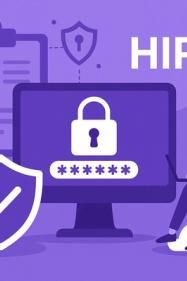The Payment Card Industry Data Security Standard (PCI-DSS) is a mandatory framework for any organization that stores, processes, or transmits cardholder data. While most PCI compliance efforts focus on technical safeguards — firewalls, encryption, and access controls — one of the most overlooked risk factors is employee behavior.
Phishing, social engineering, and insider errors remain leading causes of cardholder data exposure. That’s why Cybersecurity Awareness Training (CSAT) is not just a recommendation — it’s a direct requirement of PCI-DSS.
This article outlines how CSAT supports PCI-DSS compliance, what threats it mitigates, and how our simulation-based platform helps organizations protect sensitive payment data through people, not just technology.
PCI-DSS Overview: Why Awareness Matters
PCI-DSS is maintained by the PCI Security Standards Council and includes 12 high-level requirements organized into six categories. It applies to merchants, service providers, and vendors — regardless of size — if they handle cardholder data.
Two key training-related requirements are:
Requirement 12.6: Implement a Formal Security Awareness Program
Organizations must establish and maintain a program to make all personnel aware of the importance of cardholder data security.
Requirement 8: Identify and Authenticate Access
Training helps enforce secure access practices (e.g., not sharing credentials, recognizing phishing attempts to steal admin logins).
In short: You must train your staff, prove they’ve been trained, and ensure the training is relevant to PCI-related threats.
The Human Threat to Cardholder Data
The PCI ecosystem is a lucrative target for cybercriminals. And most breaches begin with a human mistake:
- An employee clicks a phishing link leading to credential theft or malware
- A support agent is vished into giving card data access to a fraudster
- Finance staff fall for invoice scams or gift card fraud
- Call center reps are smished via spoofed company alerts
Even with encryption and segmentation, humans are often the entry point for attackers. Cybersecurity Awareness Training is critical to closing this gap.
PCI-DSS Attacks Simulated in Training
Our AI-powered simulation platform helps organizations replicate real-world attack vectors relevant to PCI environments:
💳 Phishing Simulation
Emails impersonating payment gateways, acquirers, or internal PCI compliance systems.
📲 Smishing Simulation
Text messages mimicking fraud alerts, MFA prompts, or internal IT notifications.
📞 Vishing Simulation
Voice-based social engineering targeting customer support or finance teams.
🔐 Credential Theft Training
Simulated attacks on point-of-sale (POS) portals, CRM systems, or internal tools that store payment information.
All scenarios can be customized by role, location, and risk profile — from cashier to compliance lead.
How Our Platform Supports PCI-DSS Requirements
To meet PCI-DSS expectations under Requirement 12.6, your CSAT program must be:
- Formalized and documented
- Recurring, not one-time
- Auditable and role-specific
Our platform delivers:
- 🎯 Automated training cycles with simulation-based reinforcement
- 🧾 Audit-ready reports showing completion rates, dates, and outcomes
- 🧠 Risk analytics for phishing click rates, reporting behavior, and improvement
- 🔄 Just-in-time learning for incident follow-up or repeat offenders
With our solution, you can demonstrate that your team is trained, tested, and improving over time.
Best Practices for PCI-Compliant Awareness Programs
To meet both the letter and spirit of PCI-DSS:
1. Target High-Risk Roles
Focus on those with access to cardholder data, including finance, support, IT, and compliance.
2. Deliver Regular, Interactive Training
PCI-DSS expects ongoing engagement. Quarterly simulations and refreshers are ideal.
3. Simulate Relevant Threats
Generic phishing isn’t enough. Tailor scenarios to payment-specific risks.
4. Track, Remediate, and Report
Identify users who fail simulations and assign focused remediation training.
5. Include Third-Party Partners
Service providers and vendors often have access to payment environments. Extend training to them as part of your compliance program.
Audit Preparation & Evidence Management
PCI audits (internal or QSA-led) will ask:
- Is there a formal security awareness program?
- Can you show who was trained, when, and how?
- Are training materials updated regularly?
- Do staff understand their role in protecting cardholder data?
Our platform allows GRC managers and compliance teams to:
- Export role-specific training logs
- Provide click-through evidence of training modules
- Map simulation content to PCI-DSS control areas
- Demonstrate training impact over time
Beyond Compliance: Reducing Breach Risk
A strong CSAT program also helps organizations:
- Prevent fraud-related chargebacks and revenue loss
- Reduce incident response time via employee reporting
- Enhance customer trust by avoiding publicized breaches
- Lower the risk of non-compliance fines or penalties
In a landscape where attackers evolve daily, training is your adaptive layer of defense.
Why PCI-Regulated Businesses Choose Our Platform
We serve retailers, payment processors, SaaS platforms, and financial service providers with:
- ✅ PCI-specific scenario libraries
- 📊 Training analytics dashboards for CISOs and compliance leads
- 📄 Evidence export features for QSA audits
- 🛠️ Integration with ticketing or HR systems for training enforcement
- 🌍 Multilingual training support for global retail teams
Whether you're a Level 1 merchant or a tech vendor supporting PCI clients, we make human-layer security measurable and compliant.
Conclusion: Compliance Starts with People
PCI-DSS compliance is not just about passing an audit — it’s about reducing the risk of real-world financial and reputational damage. Your staff are both a vulnerability and a defense layer. Training them effectively is not optional — it’s essential.
By integrating simulation-based awareness training, you fulfill PCI-DSS requirements and build a payment environment where people actively help protect cardholder data.
Request a Demo
Discover how our Cybersecurity Awareness Training platform helps you meet PCI-DSS requirements and strengthen your human firewall — with simulations, metrics, and audit-ready documentation. 👉 Request a Demo Now

